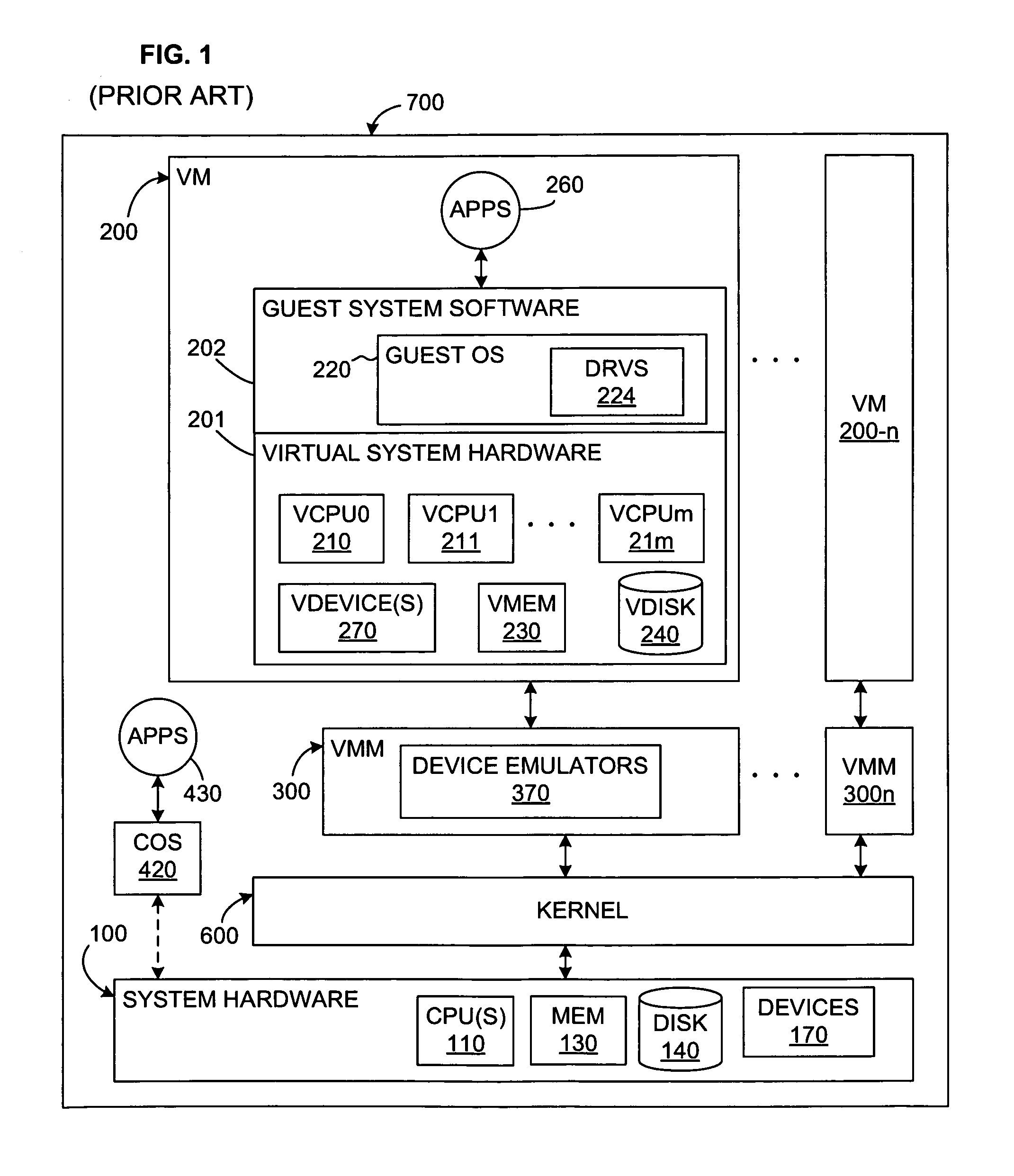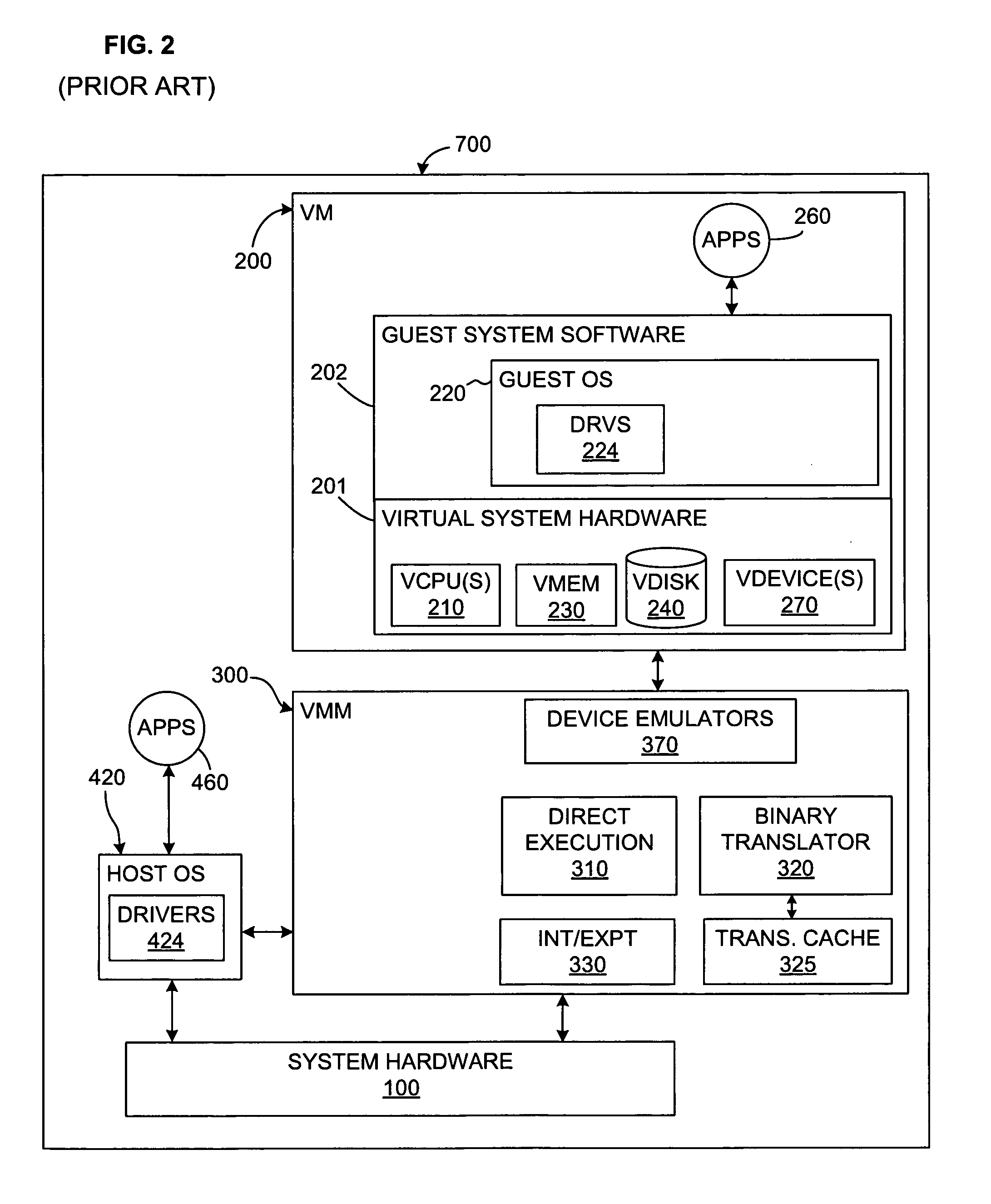System and method for cooperative virtual machine memory scheduling
a virtual machine and memory scheduling technology, applied in memory adressing/allocation/relocation, program control, multi-programming arrangements, etc., can solve problems such as page fault detection, operating system page fault detection, and page faults that cannot be identified clearly, so as to reduce page-out and effectively implement memory reclaim
- Summary
- Abstract
- Description
- Claims
- Application Information
AI Technical Summary
Benefits of technology
Problems solved by technology
Method used
Image
Examples
Embodiment Construction
[0052]A preferred embodiment of the present invention is now described with reference to the figures where like reference numbers indicate identical or functionally similar elements. Also in the figures, the left most digits of each reference number correspond to the figure in which the reference number is first used.
[0053]The invention is a system and method for reclaiming memory assigned to a virtual machine. A resource reservation application (called a “balloon application”) running as a guest application in the virtual machine requests a location in the guest virtual memory from the guest operating system. According to one embodiment of the present invention, the balloon application also periodically accesses the allocated guest virtual memory location. Depending on memory conditions in the virtual machine, such accesses either keep the guest virtual memory location mapped to a location in guest physical memory (i.e. they preempt a page-out by the guest operating system) or caus...
PUM
 Login to View More
Login to View More Abstract
Description
Claims
Application Information
 Login to View More
Login to View More - R&D
- Intellectual Property
- Life Sciences
- Materials
- Tech Scout
- Unparalleled Data Quality
- Higher Quality Content
- 60% Fewer Hallucinations
Browse by: Latest US Patents, China's latest patents, Technical Efficacy Thesaurus, Application Domain, Technology Topic, Popular Technical Reports.
© 2025 PatSnap. All rights reserved.Legal|Privacy policy|Modern Slavery Act Transparency Statement|Sitemap|About US| Contact US: help@patsnap.com



